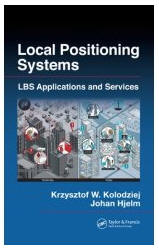September 2006
![]()
AutomatedBuildings.com

In the name of fostering in-building wireless technology and adoption, the In-Building Wireless Alliance (IBWA) has formed.
Knowing the location of resources and users as they access the wireless network is becoming increasingly important. Being able to track the physical location of wireless devices facilitates a variety of innovative applications.
The applications serve diverse needs, including "way finding" indoors, querying objects and community building (relating people, events and objects based on location), entertainment (location-based games), and education (location-based media). Thanks to expanding use of technologies such as "always on" General Packet Radio Service, Wi-Fi and Bluetooth access points, and Radio Frequency Identification (RFID), new capabilities will help develop location-based services (LBS) resulting in "intelligent buildings."
Commerce likely will drive the adoption of intelligent environments with "smart shopping." Imagine arriving at a local supermarket, and, immediately after crossing the door, you receive a welcome message on your mobile phone that informs you about the day's promotions. Automatically, a shopping list and route map is generated based on your refrigerator contents and consumer habits. At checkout, users just confirm the total and accept the electronic payment with an RFID-enabled mobile device acting as a credit or debit card. RFID chips will be important, because they're small, don't need a power supply, can have embedded documents containing location information, and can be read at a distance.
Such intelligent environments could be the "next big thing," with a paradigm shift from "anything, anytime, anywhere" to "right thing, right time, right place." Consider the example of a large, multi-facility hospital. A doctor, equipped with a tablet PC, which she uses to access patient records and images in real time, is conducting her patient visits. As the doctor moves from the general patient unit into the intensive care unit, the location-aware network senses her movement and instantly instructs the underlying data network to adjust its quality-of-service (QoS) settings to help ensure that she has the highest level of bandwidth priority. In this way, even the largest image file receives guaranteed delivery when it matters the most.
Indoor LBS and IBWA Vision for “Seamless Location” and “Seamless Communication”
With the proliferation of wireless devices and wireless broadband connectivity storming all over the voice and data world these days, real estate developers, architects, building management firms, and wireless companies are putting their heads together to understand how the building of the future will support voice, data, and location technology with a common communication and information technology infrastructure.
In the name of fostering in-building wireless technology and adoption, the In-Building Wireless Alliance (IBWA) has formed. The goal of the newly formed group is to promote increased coverage, productivity and safety. Founding members include Akridge, ADC, Sprint, LGC Wireless, Motorola and PRTM. Additional members include companies that represent the commercial real estate, communications infrastructure and services, and the public safety sectors. IBWA is trying to "accelerate the adoption of in-building wireless as a means of unlocking value to all stakeholders of communication and information within a building."
| |
IndoorLBS has the vision for creating “seamless location,” whereas the IBWA has the vision for creating "seemless communications" with buildings and how various location technologies will support better communication with workers and tenants.
